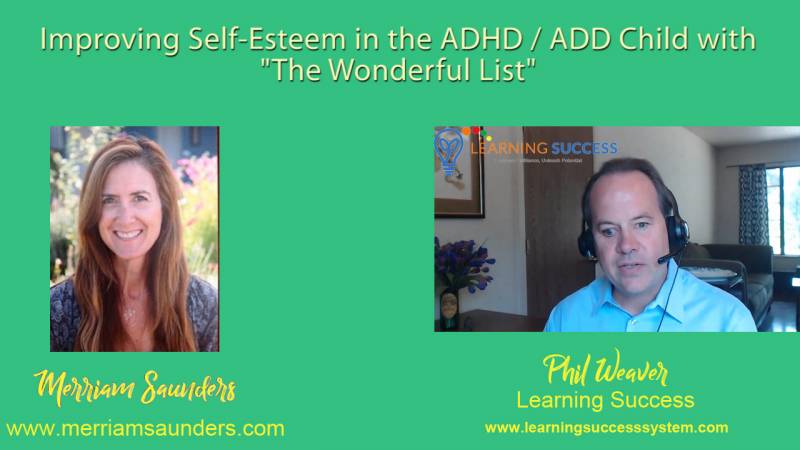
Transcript
Phil: Okay. Fantastic. That'll be exciting. Good. So you talk about the wonderful list and this is something we actually do we call it catching in the act, but can you explain what the wonderful list it is, what it is and how it's helpful for guiding behavior?
Merriam: Yeah, so I can speak of the story because this is one of the first interventions that I, ask my clients to do when they come to meet with me. because children with ADHD specifically, and most frequently children with the hyperactive presentation of Adhd usually spend their days being told everything that they've done wrong, which over time has a drastic impact on a child's self-esteem. Because Adhd is an impulse control disorder. If they have the hyperactive kind. Oftentimes these children find themselves behaving in ways that they weren't even able to control and happens before they, you know, even knew that they had done what they did. So to be told that you're constantly doing something wrong when it's outside of your control is really detrimental to your self-esteem. And so I have parents write what we call a wonderful list, which is, you know, grab a notebook or use your iPhone and try to catch your kids doing something right.
Merriam: And we find that they do things right all day. They might not be spectacular. They're not, you know, solving world peace or anything, but they're picking up their socks or their bringing up plate, you know, from the table to the sink without being told, little, little tiny things that they do. Right. And not only does it help then to read that list to them at the end of the day, but it also helps to reframe the way we look at our children as parents because when we're so focused on the negative, it doesn't feel good. It's not joyful parenting.
Phil: Framing is really everything. And of course, the quote what we focus on grows, right? Yeah. We used to use, I was 20 years as a Kung Fu instructor. And so we would have a real big mix of children with Adhd. Early on in my career we had an elementary school teacher, not teacher, a principal who has brought his daughter in and what we did. And then he sent us, I think every ADHD kid in his entire school to our classes. And along that he sent us his dyslexics in his dyscalculics and his dysgraphics and everything. So, we had quite a quite a testing ground and figuring things out. But one of the things we would do is use the wonderful list theory. And at the same time a lot for a kid with learned helplessness.
Phil: And that comes up a lot. And we could use a kid who might be the class clown on one hand who was trying to get attention and the one with learned helplessness who was trying to just be absorbed into the background and not noticed. And we would try it. And we were conscious of just look and look and look for, for the tiniest thing from the kid with learned helplessness to get their behavior change to where they would try hard. Because they wouldn't try it all. And then at the same time we were ignoring the kid who was acting out. And so we've then finally when we could compliment the one with the learned helplessness and do that over and over until we, and you just have to find the tiniest thing and they almost didn't believe that they did something right. You know?
Phil: and so we could control the whole class, and bring them by that methodology. So I really love what you do and then we would, of course we were teaching the parents how to do the same.
Get the Full interview here
Do You Need help with a Learning Difficulty?
Our simple online analysis will help you get to the core of the problem and find the right solution for you.
Understanding how to help someone with a learning difficulty starts with understanding which micro-skills are affected. When you learn which of the micro-skills is the problem, you will then be on your way to solving it.
You'll also learn how to:
- Build confidence
- Enhance Learning ability
- Eliminate avoidance
- Build grit
You can get this analysis for free by filling out this simple form. This will help you get to the bottom of a learning difficulty and provide you with a solution. If you are ready to put this problem behind you click the button below and fill out the form.










